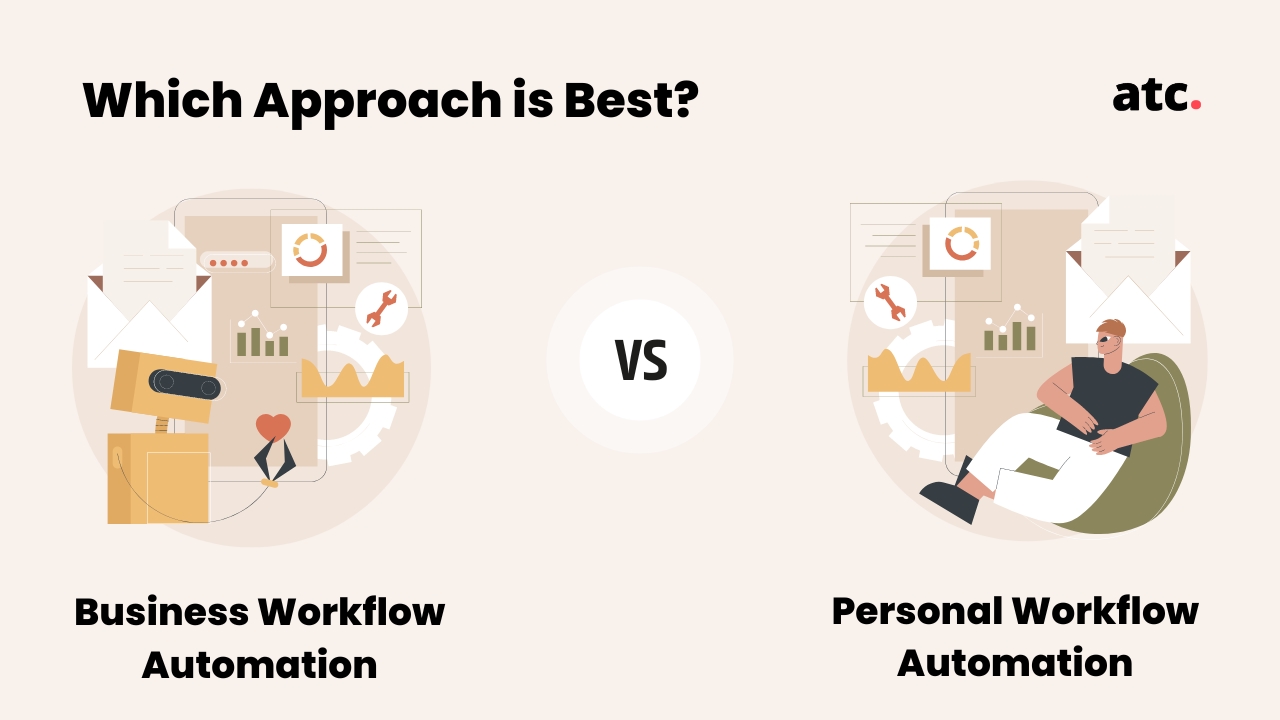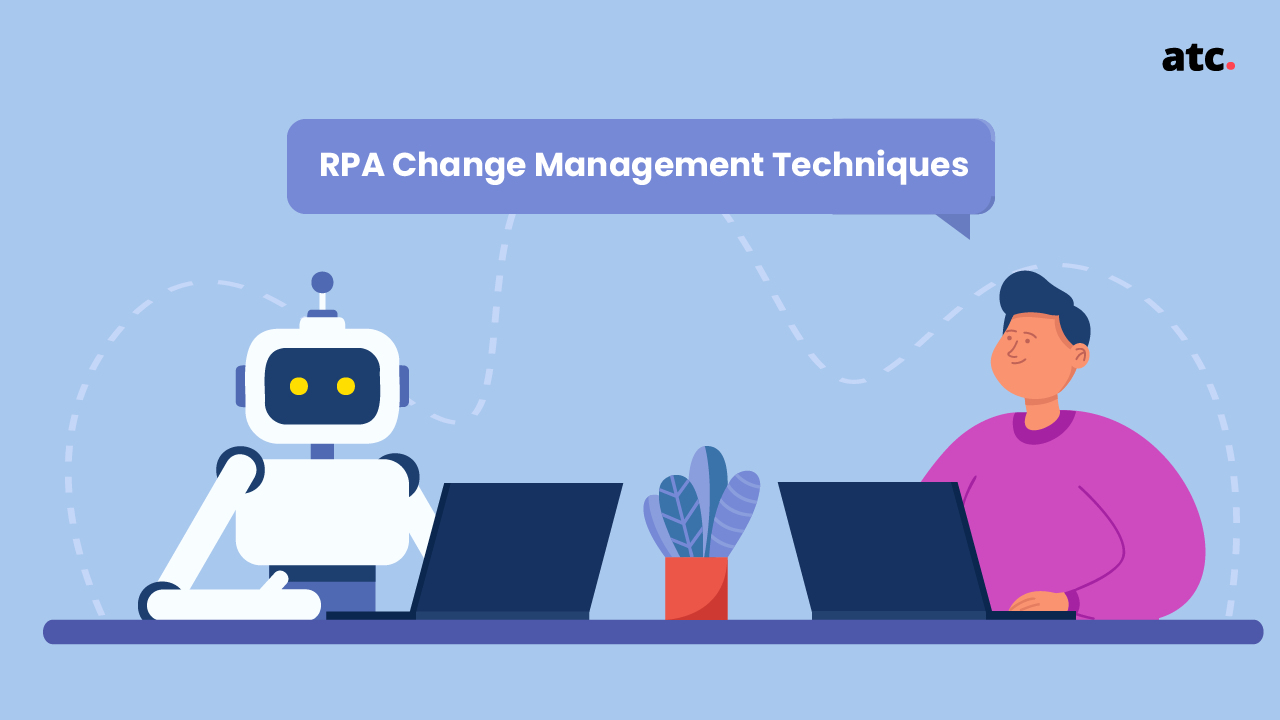Subscribe to the blog
Automating tedious, repetitive tasks using robotic process automation (RPA) is gaining immense popularity. A majority of businesses today are implementing this technology due to its many advantages, including cost savings, increased operational efficiency, and improved compliance.
However, RPA has its fair share of complications that might ruin your automation goals. Without sufficient implementation and expertise, robotic process automation failure may be inevitable. A survey claims that in terms of implementation time, cost savings, and analytics, over 40% of RPA programs fall short of expectations.
However, if you pay close attention to a few crucial factors, many RPA errors are
preventable.
So, what are the common problems with automation, and how can you avoid them?
Common Robotic Process Automation Failures and How to Overcome Them
1. Automating the wrong process:
This is most likely the most serious error: it implies that you have automated an inappropriate process.
RPA is most effective in situations when transactions are repeated and do not need human judgment. It is not for tasks that require creative thinking, brainstorming, or interacting with the physical world, wherein RPA fails.
If the process requires making judgments on a case-by-case basis, you want humans to be actively participating.
The goal is to let humans perform human jobs. Nobody enjoys working on low-value, mindless, or repetitive tasks. For automation, select operations that have a prominent impact but are systematic, repeatable, and simple do not entail high-level cognitive
functions.
RPA installation will go easily and produce strong results if the operations have undergone a selection process involving the IT, business, and RPA teams.
2. Lack of consistency with stakeholders
Before commencing on an RPA journey, many managers fail to consider the culture of a company that will need to adjust and support changes in the work environment.
Mastering new technologies, particularly RPA, is a complex undertaking since they affect not just the way employees conduct their work but also the behavior of the business as a whole. Hence, properly explaining these changes to stakeholders, listening to employees’ ideas, and securing their commitment are critical to success.
Alignment is the key to effective RPA implementation. A lack of alignment with key business stakeholders leads to the premature termination of the RPA project. This results from having high expectations and underestimating the political repercussions. If you can manage member expectations and ensure that the RPA goals are aligned with the business goals and objectives, you are more likely to recruit the ideal candidates for the project while lowering the chance of failure.
You can even work with an implementation partner to recruit participants and demonstrate the project's worth to all relevant parties through a pilot or proof of concept.
3. Building on a bad design
When firms first begin automating their RPA deployment, they often depend on unstable, non-scalable designs to achieve quick adoption.
However, without a solid framework, scaling RPA inside a firm can be challenging, if not altogether impossible. Adopting RPA is a journey, not a one-time event. In addition to the software purchase and deployment, it entails conceptualizing how it will develop within your firm and affect it over time.
You must create a well-designed roadmap that outlines the important milestones to success along this path, such as developing the necessary skills, deciding which activities to automate, generating an RPA budget, obtaining executive support, and conducting a pilot
trial.
4. Underestimating what happens after processes have been automated
Process rigidity, dependency, and sensitivity are frequent issues with RPA.
RPA software is excellent for automating repetitive, rule-based operations. However, such applications are not robots; rather, they are software scripts created to execute specific commands.
Some people who blend RPA and AI don't distinguish between the two.
When an RPA bot runs into situations for which it has not been trained how to operate, you can watch it malfunction. Changes to the intended user interface are one of the most typical instances.
For example, if the RPA bot is set up to open a website and click a button in the top left corner to open the registration page, it will continue to do so until it locates the correct button in the page's upper left corner.
The issue emerges if you place this registration button anywhere other than the top left corner of the page, such as the center of the page. The bot will continue seeking it in the upper left corner, which will cause the RPA sequence to end. Technically speaking, it's incorrect to refer to this as a robotic process automation failure – this is a mistake made by a human. The bot has only operated just as instructed. It just didn't anticipate such a challenge.
When RPA is initially deployed, this is typically a greater problem than some people realize. As a result, to avoid automation failures, improvements to address the various moving aspects of automation must be continually planned, communicated, and teste
5. You focus too much on reducing headcount
Leaders talk about empowering staff by minimizing repetitious labor, yet some businesses choose RPA initiatives with headcount reduction in mind. However, the most significant benefit of implementing RPA lies in enabling your talent to apply their expertise to higher-value jobs. Doing this removes the strain of carrying out manual tasks that have little impact on the company’s expansion or its customers’ satisfaction.
For instance, consider the position of a compliance officer. RPA is frequently used by banks as a first step to automate the collecting of data from documents, but a compliance officer still needs to go through papers to obtain the specific data they need to make judgments.
Hence, both the employee and the automation are essential here.
Additionally, businesses also neglect the necessity of providing employees with digital skill training so that they can collaborate with their digital counterparts. According to IDC's Future of Work survey, 75% of global firms stated it was difficult to hire individuals with digital abilities, and 20% mentioned insufficient worker skills and/or training as a major
obstacle.
6. Poor management
When a company claims that it cannot generate sufficient ROI with RPA, it is usually because it did not invest in effective program management and supervision.
On the surface, it may seem that once the bot is developed, all parts of the job have been taken over, and it can operate independently without supervision. In reality, automation resembles a human worker rather than a piece of software. Much like a new employee, the automation will run into situations in the production setting that it was not exposed to during training.
As a result, while there are undeniable advantages to having user-friendly automation tools in the hands of the company, as well as notable one-off examples of effectiveness, the great majority of ROI-generating automation is to be performed by a professional automation team.
In addition to ensuring the bots are optimized to function at their highest level, a well-run digital workforce maintenance program must also closely monitor analytics to ensure that standards for process accuracy, cost savings, and customer satisfaction are fulfilled. It should also comprehensively report on the entire measurable value brought by the automation to the business process.
7. Inflated expectations
Faulty infrastructure rollouts and inadequate requirements gathering and designs are just a few apparent examples of early robotic process automation failures brought on by early, irrational expectations.
Many RPA efforts begin with the expectation of instantaneous gratification. However, like with any technological endeavor, metrics are required to track progress and guarantee that the RPA achieves its objectives. Ensure that your objectives are realistic and that you are not trying to punch in a nail with a screwdriver. RPA solutions aren't operable instantly like SaaS or cloud services.
Setting realistic goals before embarking on your automation journey is crucial. These objectives will help you determine if your RPA installation was a success or a failure.
Understand and convey the deployment timescales to the teams and stakeholders. Creating a road plan that offers visibility throughout the entire project is a smart practice.
RPA implementation typically takes between 1–2 months. It covers the time spent configuring, testing, and launching bots. However, these timescales might vary depending on the complexity, amount of automation required, and team size.
Final Thoughts
RPA was the new kid on the block a few years ago, but these platforms have evolved since then. The majority of robotic process automation failures are avoidable and controllable. By avoiding making these common mistakes, most businesses would be able to reap the benefits of automation.
Hiring an automation partner that can deliver high automation efficiency with ZERO error rates is unarguably one of the greatest approaches to assure fool-proof deployment.
We are a leading provider of robotic process automation services with a team of professionals well-versed in the technology. We handle each stage of the implementation process, ensuring that the whole RPA execution is seamless and that the automation does not disrupt any underlying business systems and processes. In fact, by automating data extraction and comparison to match and validate records, our RPA solution for an insurance firm significantly decreased turnaround time by 80%. Learn more about our services by clicking here.




